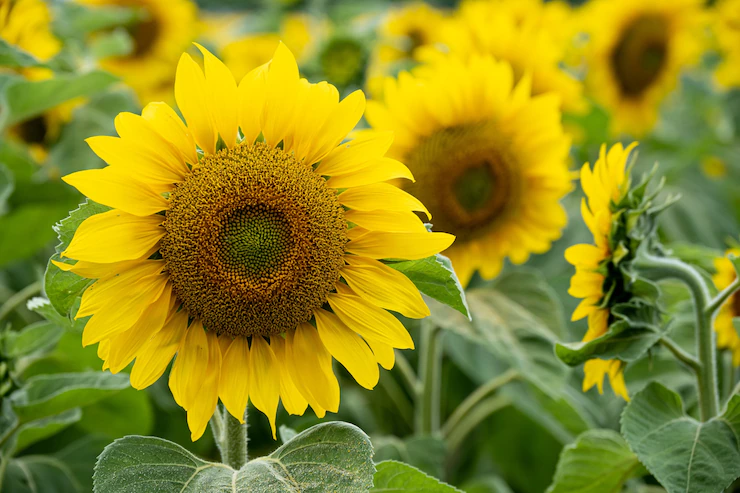Sunflowers are vibrant and iconic flowers that also offer nutritious seeds and oil. If you’re considering growing sunflowers in South Africa, whether for ornamental purposes, bird feed, or oil production, here are ten important things you should know:
- Climate and Region: Sunflowers thrive in warm and sunny climates with a relatively long growing season. South Africa has several regions suitable for sunflower cultivation, including the Free State, North West, Mpumalanga, and parts of the Northern Cape. Choose a region with the right climate and temperature ranges for optimal sunflower growth.
- Variety Selection: There are different sunflower varieties available, each with its unique characteristics in terms of plant height, flower color, and seed size. Popular sunflower varieties grown in South Africa include PAN 7347, PAN 3589, and SUNBIRD. Consider factors such as growth habit, disease resistance, and market demand when selecting sunflower varieties.
- Soil Requirements: Sunflowers prefer well-drained soils with good fertility. Conduct a soil test to assess the pH level and nutrient content of your soil. Sunflowers generally prefer a pH range of 6.0 to 7.5. Amend the soil with organic matter and appropriate fertilizers based on soil test results to ensure optimal nutrient availability.
- Land Preparation: Clear the land of weeds, rocks, and debris before planting sunflowers. Prepare the soil by tilling and incorporating organic matter to improve its structure and drainage. Ensure proper soil preparation to facilitate root development and water infiltration.
- Planting and Spacing: Sunflowers can be sown directly from seeds. Plant the seeds at the appropriate depth, typically around 2 to 5 centimeters, depending on the variety and soil conditions. Provide adequate spacing between plants, generally ranging from 30 to 60 centimeters, depending on the desired plant size and the intended use of sunflowers.
- Irrigation: Sunflowers require regular and sufficient irrigation, particularly during critical growth stages such as flowering and seed development. Implement an efficient irrigation system, such as drip irrigation or sprinklers, to provide uniform water distribution. Monitor soil moisture levels and adjust irrigation accordingly, taking into account the specific water requirements of sunflowers.
- Fertilization: Sunflowers have specific nutrient requirements for optimal growth and seed production. Conduct a soil analysis and consult with agricultural experts to determine the appropriate fertilization regimen. Apply balanced fertilizers with nitrogen, phosphorus, and potassium, along with micronutrients, based on the sunflower’s nutrient needs and the specific soil conditions.
- Pest and Disease Management: Sunflowers can be susceptible to pests such as aphids, caterpillars, and diseases like downy mildew and rust. Implement integrated pest and disease management strategies, including regular monitoring, cultural practices, and the use of appropriate pesticides or biological controls when necessary. Practice crop rotation and maintain good field hygiene to minimize disease pressure.
- Support and Staking: Some sunflower varieties may require support or staking, especially taller varieties that can be prone to lodging or bending. Install stakes or trellises to provide support for the plants as they grow. Secure the stems gently to avoid damage.
- Harvesting: Sunflowers are ready for harvest when the back of the flower heads turns brown and dry, and the seeds are fully matured. Monitor the moisture content of the seeds and harvest when the moisture level is low enough to prevent spoilage. Cut the flower heads and hang them in a well-ventilated area to dry. Extract the seeds from the flower heads for consumption or further processing.
By considering these ten crucial factors before growing sunflowers in South Africa, you’ll be better prepared to cultivate a successful crop. Stay updated on local research, industry best practices, and consult with local agricultural experts for tailored advice. With proper care and attention, you can enjoy a vibrant display of sunflowers or harvest nutritious seeds for various purposes.
Join 'Farmers Mag' WhatsApp Channel
Get the latest Farming news and tips delivered straight to your WhatsApp
CLICK HERE TO JOIN






